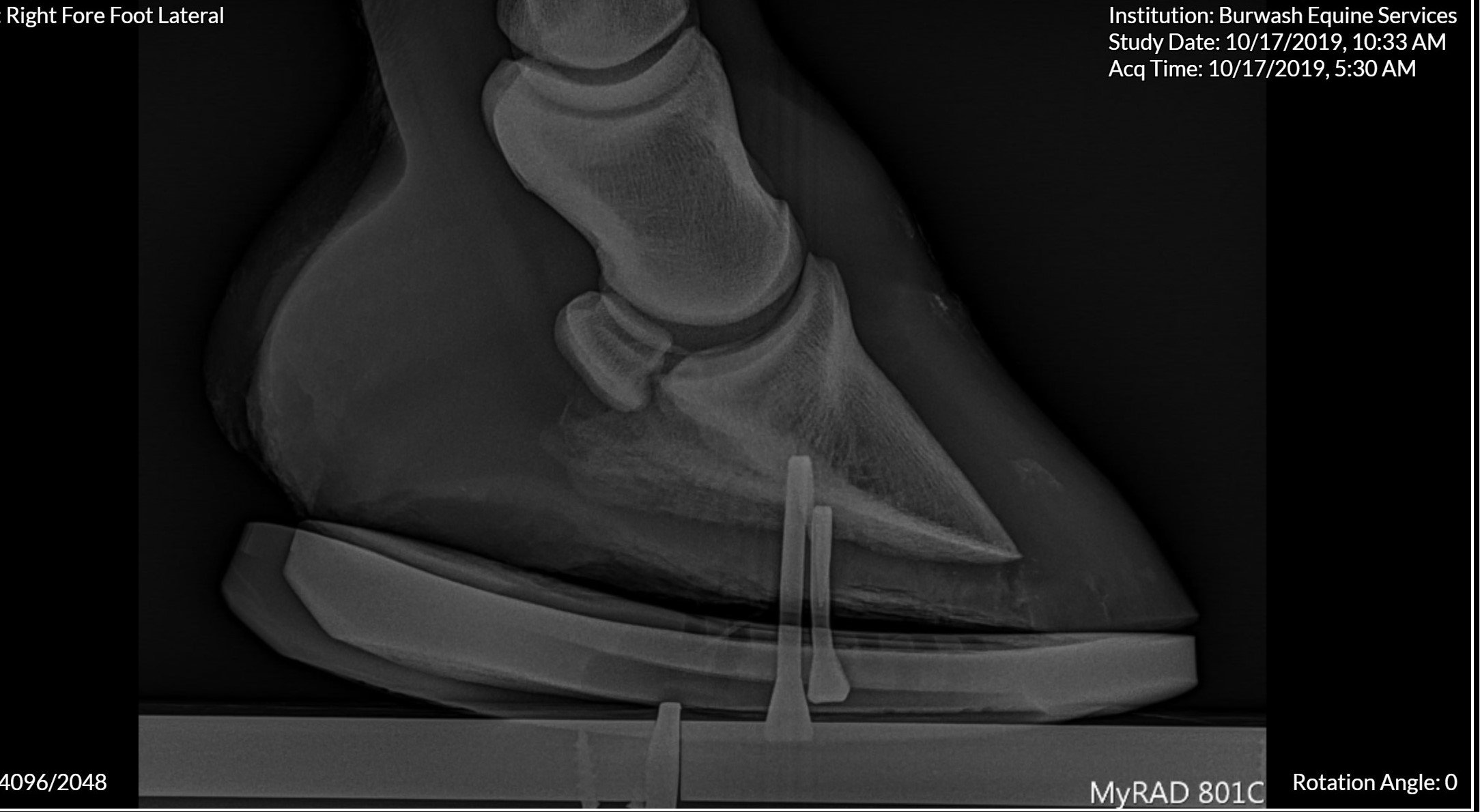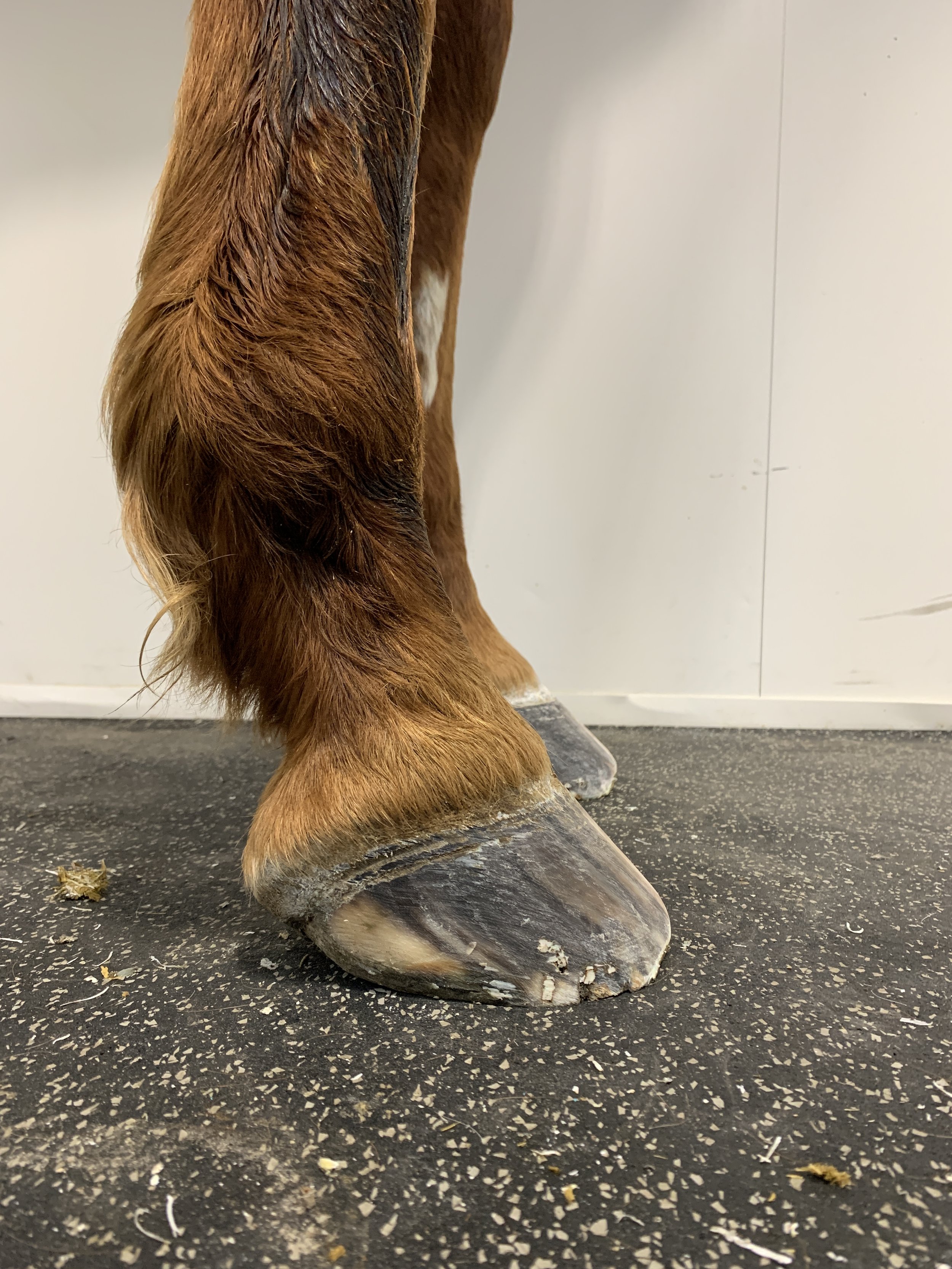Steve with no sole
Remember when you could run across a gravel parking lot barefoot when you were a kid? Not anymore! And that’s how Steve used to feel too.
Steve is a 16 year old QH gelding who originally presented for a forelimb lameness that came on suddenly after an incident when unloading from a trailer. The lameness was localized to the foot with nerve blocks (this is where local freezing is injected around the nerves that go to the foot, resulting in numbing of that area). X-rays were taken and it soon became apparent that Steve had likely suffered a bruise (otherwise known as contusion) of the foot and coffin bone. Based on the x-rays, it was clear that he was more susceptible to this because he had an overall lack of foot mass protecting the coffin bone within his foot. His initial x-ray is pictured above. Steve had a whopping 7 mm of sole protecting his bone from the outside world. We generally get worried about this when sole depth falls below 10mm, but would ideally like to see 15mm or more of sole.
In order to make Steve more comfortable, we knew he needed corrective shoeing to help protect the foot from further injury and to help him start to rebuild foot mass and grow more protection for the structures inside the foot. Working with our trusted farrier, Kirk Shaw, we developed a shoeing formula specifically for Steve to address the problems in his feet. For Steve, this involved placement of a rocker shoe as pictured in the x-ray below.
Steve later developed a quarter crack, likely as a result of the pressure that rocker shoes can place on quarters, and became lame again. It was time to develop a new tailored shoeing plan for him. Fortunately, due to the increase in foot mass that the rockers had helped us achieve, we were able to move him back to a more traditional set up.
Steve is currently happy, sound and living his best life. Thanks to the great work of Kirk, he typically maintains upwards of 14mm of sole depth.
Steve’s right front foot when we started.
Steve’s right front foot after 6 months of corrective shoeing.




